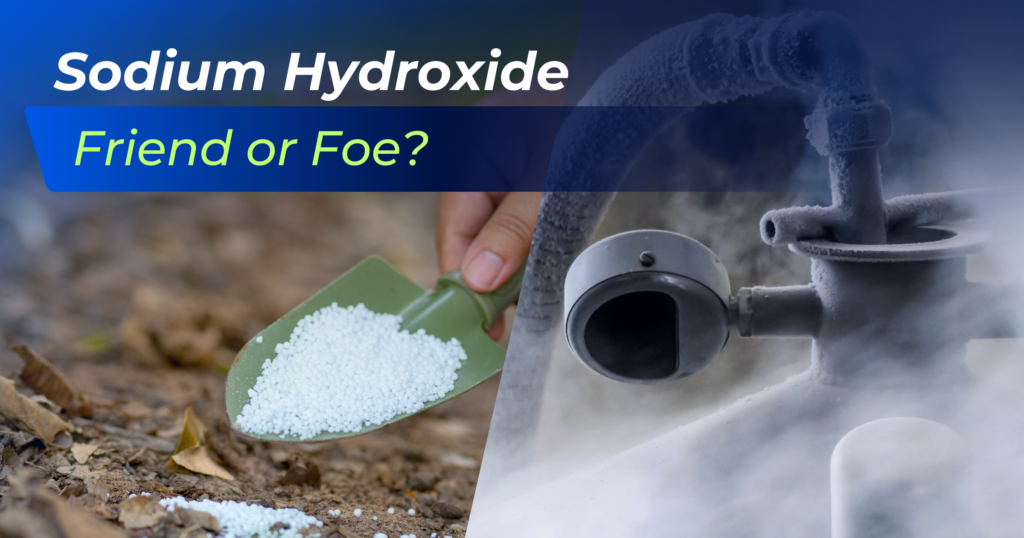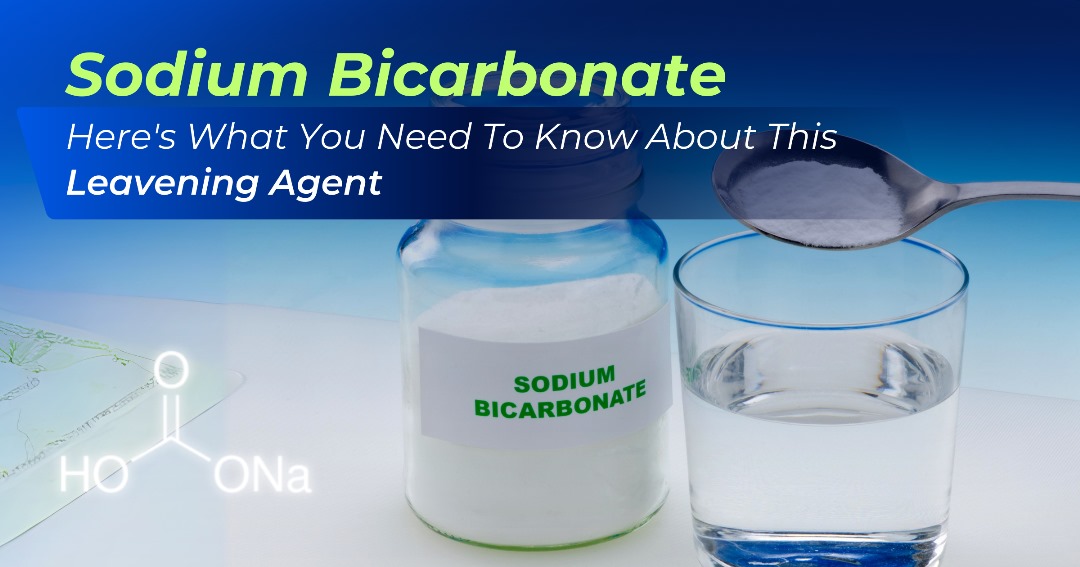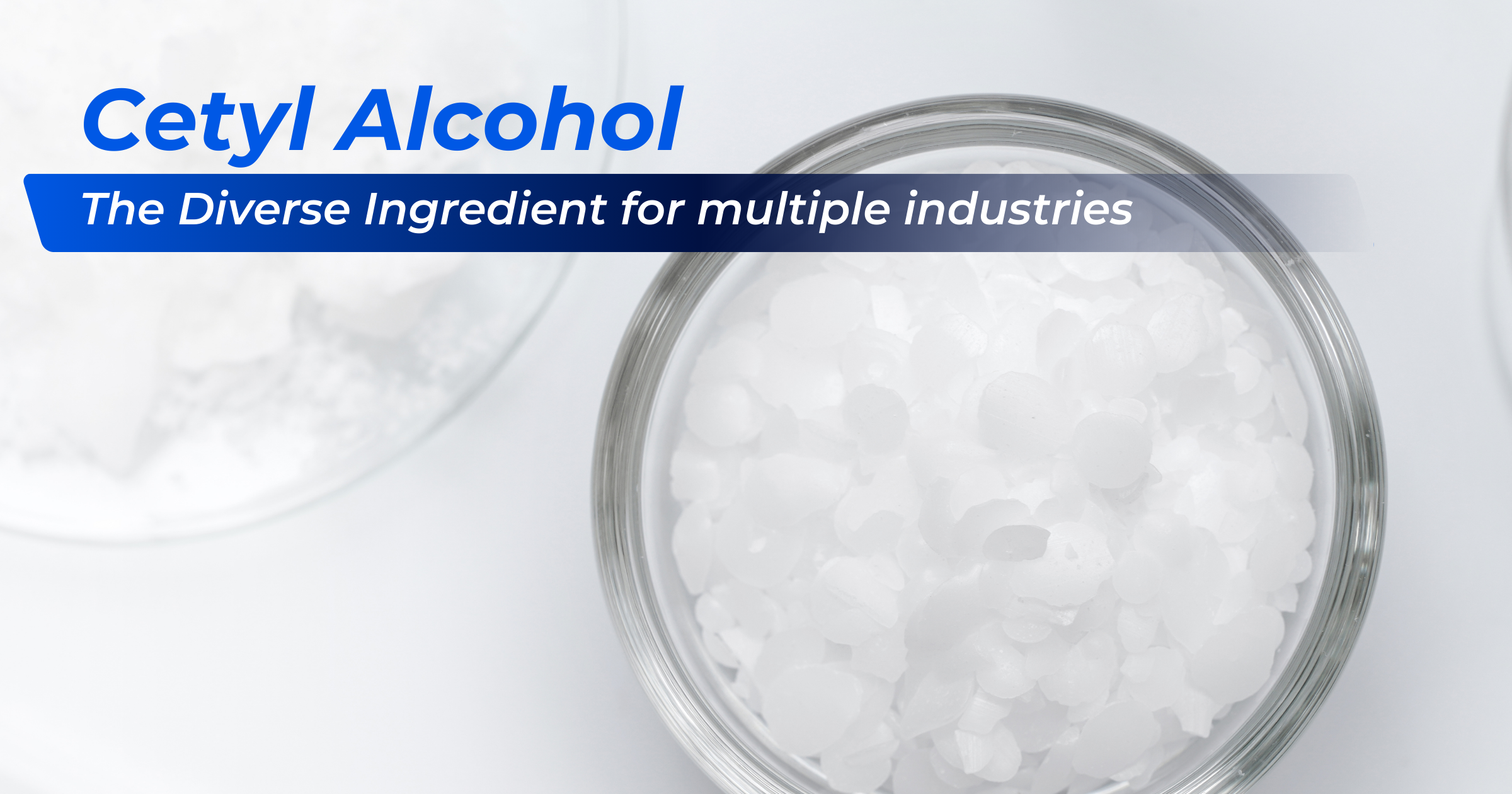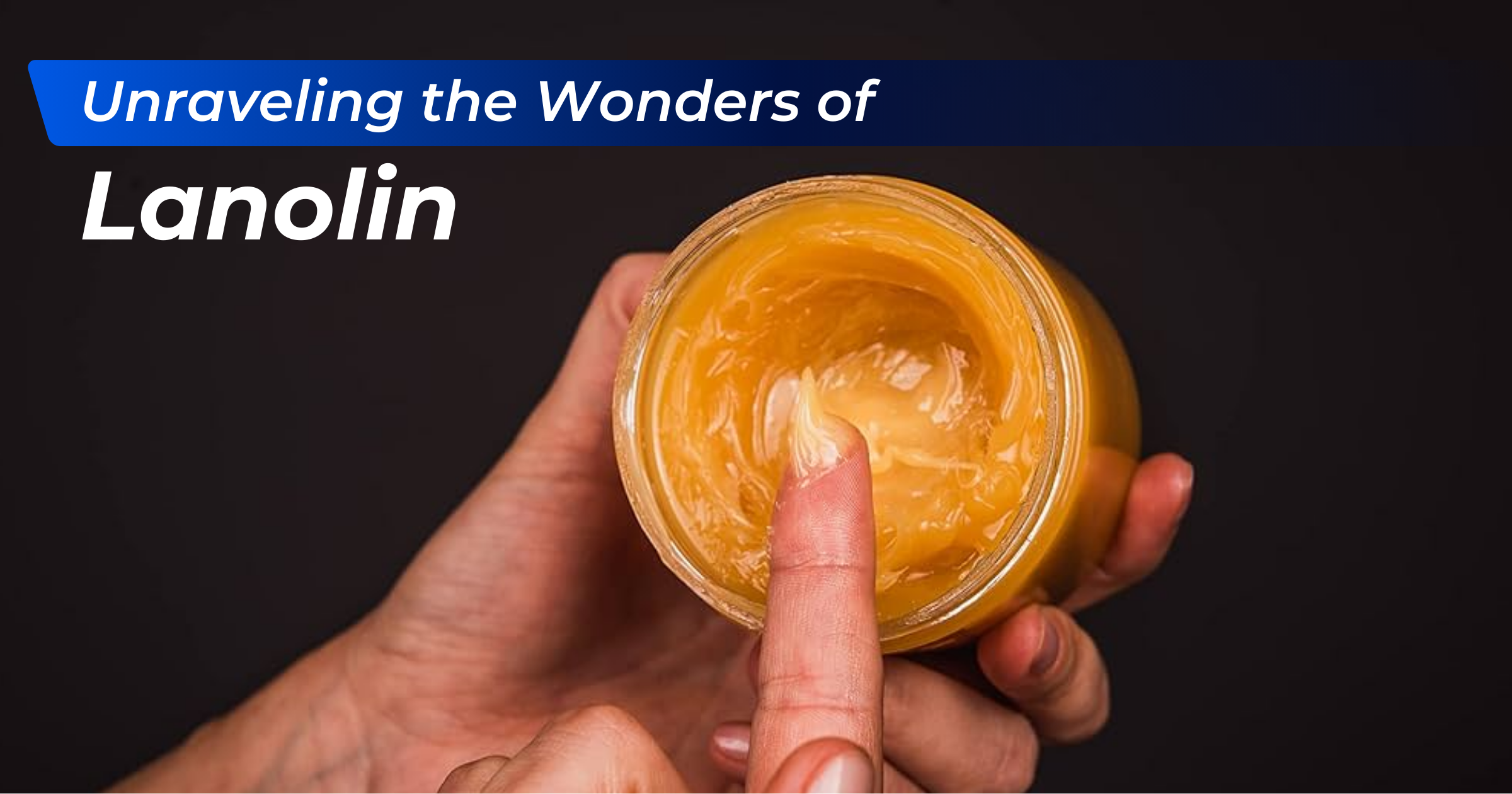
Sodium hydroxide (NaOH), also known as lye or caustic soda, is a versatile inorganic compound with various applications. It appears as a white, crystalline solid at room temperature and is highly soluble in water and alcohol.
Lye generates significant heat when dissolved in water or neutralized with acids, exhibiting a very alkaline pH of 14 at 1 mol/L concentration. With a melting point of 318°C and a boiling point of 1,390°C, sodium hydroxide is essential in manufacturing, food processing, and soaps.
Despite its usefulness, its corrosive nature demands careful handling. Join us as we explore the science behind this potent molecule.
Sodium Hydroxide Formula
Sodium Hydroxide has a deceptively simple formula, NaOH. However, this formula is crucial to its potent properties and widespread usage. But delve deeper, and you’ll discover a fascinating story of ionic bonds, electrostatic forces, and a chemistry that shapes our world in myriad ways.
Dissecting the Elements
Sodium (Na): This alkali metal, readily losing an electron to achieve stability, forms the positively charged sodium cation (Na+). Imagine a tiny, positively charged sphere representing the Na+ ion.
Oxygen (O): Seeking to complete its octet of electrons for stability, the single oxygen atom readily accepts two electrons, transforming into the negatively charged oxide ion (O-). Picture a red sphere with two additional orbiting electrons representing the O- ion.
Hydrogen (H): This eager atom donates its single electron to oxygen, forming a covalent bond and acquiring a positive charge (H+). Imagine a blue sphere with a single missing electron representing the H+ ion.
The Ionic Bond
Now, the drama unfolds! Sodium, eager to lose its electron, readily donates it to oxygen, achieving its stable octet configuration. This, however, creates oppositely charged ions: the positively charged Na+ and the negatively charged O-. But the story doesn’t end there.
The Electrostatic Waltz
Like moths to a flame, the Na+ and O- ions are drawn together by an irresistible force: electrostatic attraction. Opposite charges, as you know, attract! This powerful attraction binds them tightly, forming the hydroxide ion (OH-).
Finally, the positively charged hydrogen ion (H+) finds its perfect partner in the negatively charged hydroxide ion (OH-). Their mutual attraction leads to the birth of sodium hydroxide (NaOH).
Production and Manufacturing of Sodium Hydroxide
Sodium hydroxide is produced through an electrolytic process known as the chloralkali process. This involves the electrolysis of brine (salt water), and there are three primary raw materials needed for this process:
- Salt (sodium chloride) – This provides the sodium and chloride ions needed to produce sodium hydroxide. Salt can come from underground rock salt deposits or extracted from seawater.
- Water – This allows the salt to dissolve into brine for electrolysis. Water is purified prior to use to remove any contaminants.
- Electricity – The chloralkali process requires a continuous electrical current to drive the electrolysis reactions.
The production process involves these key steps:
1. Purification – The salt and water raw materials are purified to remove impurities that could interfere with the electrolysis reactions.
2. Brine preparation – Salt is dissolve into water to produce a concentrate brine solution (typically 25% sodium chloride by weight).
3. Electrolysis – The brine solution flows into an electrolytic cell, which applies an electrical current to split the sodium chloride into sodium, chlorine, and hydrogen ions.
4. Separation and processing – The sodium ions combine with hydroxide ions to produce sodium hydroxide. Chlorine and hydrogen gases are also produced and captured. The sodium hydroxide is concentrated and purified.
Major global manufacturers of sodium hydroxide include Dow Chemical, Olin Corporation, Tosoh, Formosa Plastics, and Occidental Petroleum (OxyChem). Most production facilities are near cheap electricity and brine sources in North America, Europe, and Asia. Recent industry trends have seen a migration of production capacity to developing regions with low energy costs, like the Middle East.
Uses and Applications of Sodium Hydroxide
Sodium hydroxide has a wide range of industrial, consumer, and niche applications due to its strong alkaline properties.
Major Industrial Uses
- Manufacturing of soaps and detergents – Lye produces hard soaps and detergents by reacting with natural fats or oils. It is critical in laundry detergents, dishwashing liquids, shampoos, and hand soaps.
- Production of rayon and viscose – Rayon and viscose use in textiles are made by reacting cellulose with sodium hydroxide. This process is called alkalisation, and lye helps dissolve the cellulose.
- Petroleum refining – Sodium hydroxide removes naphthenic acids and sulfur compounds from crude oil fractions. This helps improve the quality of fuel.
- Aluminum manufacturing – Aluminum oxide is extract from bauxite ore using lye in the Bayer process. This aluminium oxide then smelts to produce aluminium metal.
- Pulp and paper – In the Kraft process, sodium hydroxide helps digest wood chips into paper pulp. It depolymerises lignin that binds the cellulose fibres.
- Water treatment – Sodium hydroxide controls pH and softens water by precipitating calcium and magnesium ions. It helps remove heavy metals in wastewater treatment.
- Food processing – Foods like olives, canned fish, and hominy corn use sodium hydroxide for soaking and lye peeling. It provides a firm texture.
Consumer/Household Uses
- Drain cleaners – Sodium hydroxide dissolves grease clogs and hair buildup in drains. Products like Drano contain sodium hydroxide.
- Oven cleaners – Sodium hydroxide breaks down burnt food residues and grease inside ovens. Easy-Off is a typical oven cleaner with lye.
- pH control – Sodium hydroxide maintains optimal pH levels in swimming pools and hot tubs by offsetting the acidity from chlorine.
- Soap making – Handmade artisanal soaps are often create using lye and natural oils like olive or coconut oil.
Niche Applications
- pH regulator in cosmetics – Sodium hydroxide adjusts and maintains the optimum pH in various cosmetic formulations, including creams, lotions, and shampoos.
- Manufacturing of sodium silicate – Sodium silicate has adhesive, sealant and cement uses. It is produce by reacting sodium hydroxide with silicon dioxide or sand.
- Rubber recycling – Sodium hydroxide helps break down rubber products into reusable raw materials through a process known as devulcanisation.
- Sugar refining – Lye improves the colour and clarity of sugars in the sugar refining process.
- Preparing strong bases – Lye can produce other strong bases like sodium ethoxide and sodium amide.
Sodium Hydroxide in Africa
Sodium hydroxide (NaOH) production and consumption in Africa remain limited, primarily due to insufficient infrastructure, technology, and investment. South Africa leads the continent, accounting for over 50% of production, with Egypt, Nigeria, Algeria, and Morocco also contributing. Sodium hydroxide is primarily used in manufacturing soaps, detergents, and chemicals, with growing demand driven by the expansion of these industries.
Nigeria stands out as a significant producer, boasting an estimated capacity of over 500,000 metric tons annually. Key manufacturers include Eleme Petrochemicals, Indorama Eleme Fertilizer, and Notore Chemical Industries, which utilize the chloralkali process to extract sodium hydroxide from brine. The country also imports between 200,000 and 300,000 metric tons of sodium hydroxide, mainly from China, Europe, and the U.S.
In Nigeria, sodium hydroxide serves critical roles in the oil and gas, textiles, soaps, detergents, pulp and paper, and water treatment industries. Its applications include acting as a strong alkali in oil drilling and facilitating the mercerization of textiles.
As Nigeria continues to industrialize, demand for sodium hydroxide is projected to rise steadily, with local production expected to exceed 1 million metric tons by 2025. Growth will be fueled by sectors such as oil and gas, agriculture, consumer goods, and construction. Strategic investments, efficient production technologies, and supportive government policies will be vital for expanding the sodium hydroxide market in Nigeria.
Alternatives to Sodium Hydroxide
Sodium hydroxide, or lye or caustic soda, has advantages and disadvantages compared to other chemicals that can serve similar purposes.
Some alternatives to sodium hydroxide include:
- Potassium hydroxide (KOH) – The most direct alternative is caustic potash. It is use in similar industrial applications but is a bit more expensive than NaOH. The key difference is that KOH is slightly more soluble in water and organic solvents.
- Calcium hydroxide (Ca(OH)2) – Also known as slaked lime, calcium hydroxide differs quite a bit from sodium hydroxide. It is far less soluble in water, so its applications are more limited. However, calcium hydroxide is sometimes prefer in food processing as it is less corrosive to metals than NaOH.
- Sulfuric acid (H2SO4) – Sulfuric acid provides acidic properties rather than alkaline like sodium hydroxide. However, it can serve some of the same manufacturing and chemical processing functions. Sulfuric acid is very corrosive and more hazardous than NaOH.
Several Advantages of using sodium hydroxide include strong alkalinity, rapid dissociation inexpensive and versatile.
Some disadvantages of sodium hydroxide include high corrosiveness, harmful ability, vigorous reactions with acids, and degradability.
Sodium hydroxide is a versatile chemical with many uses, but precautions must be taken to handle it safely. Alternatives may be preferable in some specific applications.
Environmental Considerations When Using Sodium Hydroxide
Sodium hydroxide can pose environmental hazards if not handled and disposed of properly.
Tips for Safe Handling of Sodium Hydroxide
– Lye is corrosive to metals like aluminium, zinc, and tin. Care should be taken to use proper containers and equipment when working with NaOH.
– Contact with skin and eyes should be avoided, as NaOH can cause severe burns. Protective equipment should be worn.
– Spills should be cleaned up immediately using neutralizing agents.
Potential Hazards
– Sodium hydroxide is toxic to aquatic life. Spills or discharge into bodies of water should be avoided.
– Release into the atmosphere is also concerning, as NaOH can react with CO2 to form sodium carbonate. This can harm vegetation.
Proper Disposal
– Waste sodium hydroxide should be disposed of as hazardous waste. It should be drain or dumped with proper neutralisation.
– In small quantities, lye can be carefully neutralized with acids like citric acid or vinegar. The neutralize salt solution can then be flushed down the drain.
– Lensed waste management companies should handle larger quantities, ensuring compliance with local regulations.
– Proper neutralisation, containment, and disposal help minimize the environmental impacts of lye.
Market Trends and Outlook
The global Lye market is expected to grow steadily in the coming years, driven by increasing demand from end-use industries such as paper and pulp, soaps and detergents, and alumina.
Demand Drivers
The paper and pulp industry are a significant consumer of lye and expect to drive market growth as paper production rises globally. Population growth and the increasing demand for paper products will also contribute to lye demand.
The soaps and detergents industry heavily relies on it for manufacturing cleaning products. Rising disposable incomes and urbanization in developing countries are anticipate boosting the consumption of cleaning agents, further propelling the lye market.
In the alumina industry, sodium hydroxide is utilized as a digesting agent in the Bayer process for alumina production. The thriving aluminium market and rising production will spur lye adoption in the coming years.
Production Capacity
The sodium hydroxide market is consolidated, with a few significant players dominating supply. Key manufacturers invest in capacity expansions and build new plants to ramp production and meet growing demand.
For instance, in 2021, Kemira announced plans to increase sodium hydroxide production capacity by 200,000 tons per year at its site in Finland. Similarly, Dow Chemical is implementing capacity increase projects in the U.S.
Pricing Trends
Sodium hydroxide prices have increased since 2019 due to tight supply and rising energy and transportation costs. Prices are expected to remain elevate in the near term.
However, high prices could curb demand from small-scale consumers in developing regions. Pricing volatility is likely to continue as new capacity comes online.
Wrapping up…
This article has highlighted sodium hydroxide’s versatile chemical properties, production methods, and its applications in various sectors, including food, detergents, and metal processing.
While it plays a crucial role in large-scale manufacturing and small businesses across Africa and Nigeria, sodium hydroxide must be handled with care due to its potential hazards.
As sustainability gains importance, industries may seek to optimize lye usage and explore greener alternatives. Advanced technologies could enhance production efficiency.
For now, sodium hydroxide remains an essential raw material, vital for supplying everyday products. Stay with Matta for more insights on chemicals, raw materials, and commodities.




